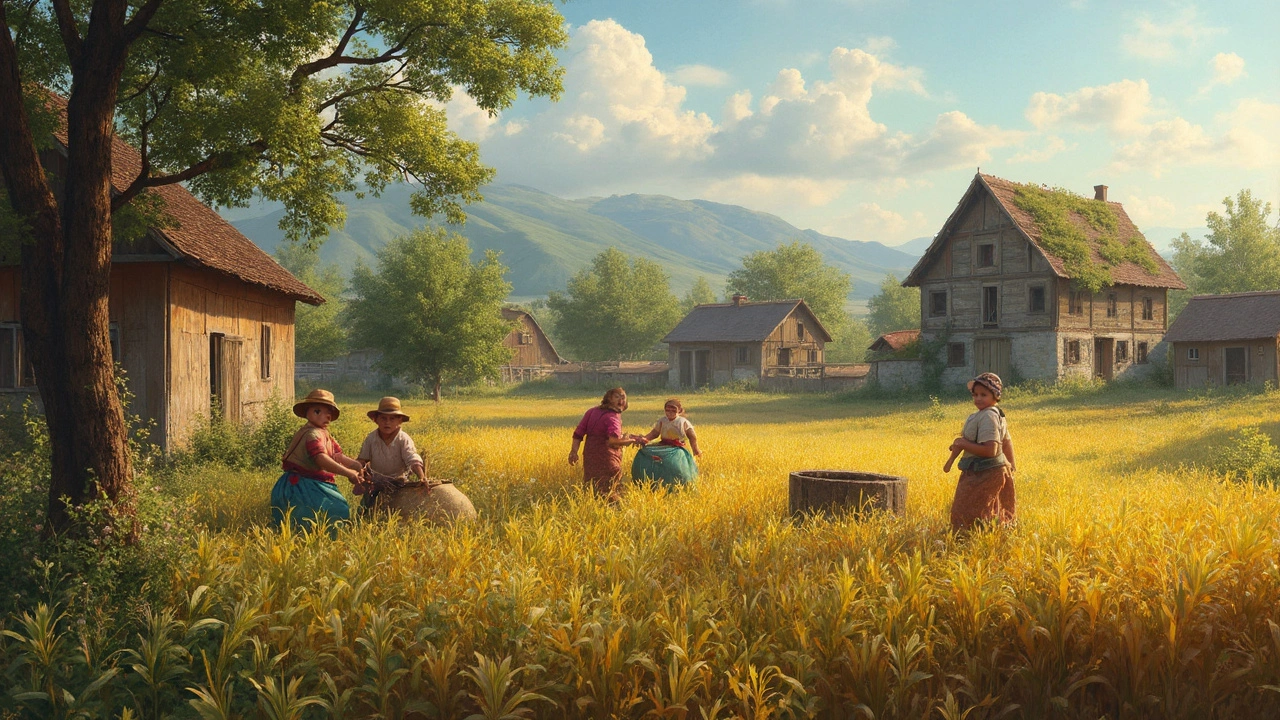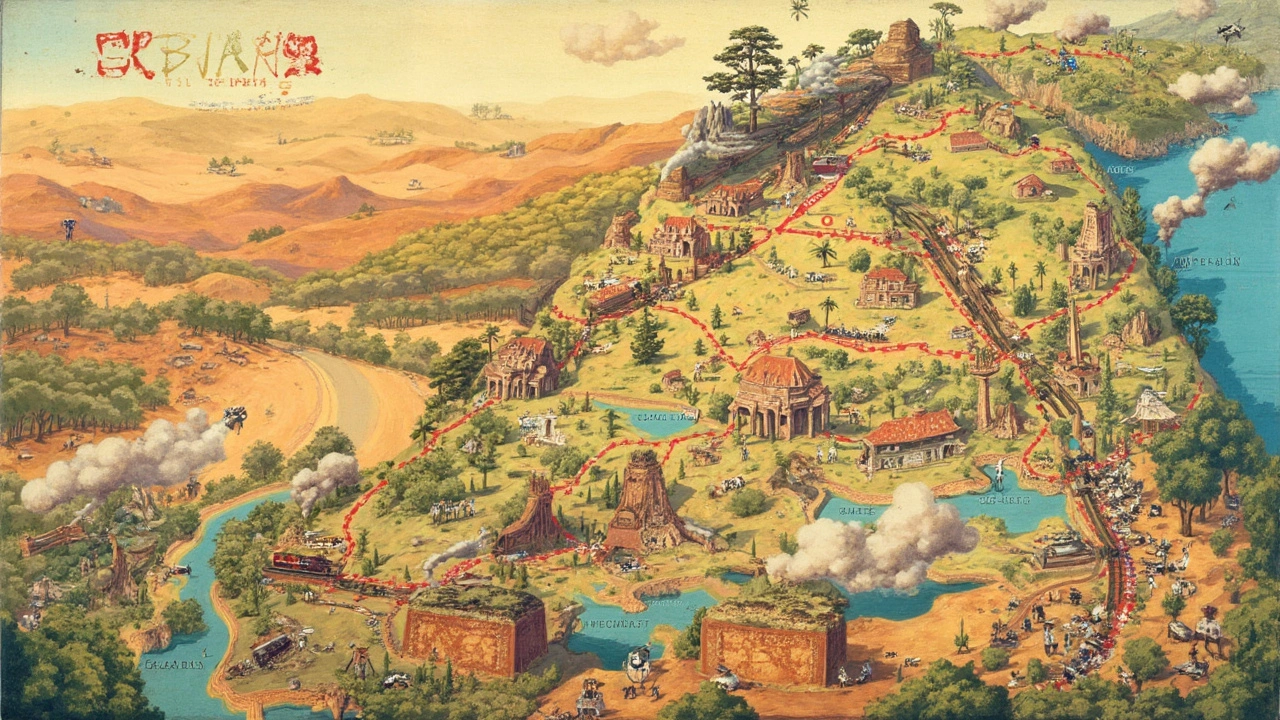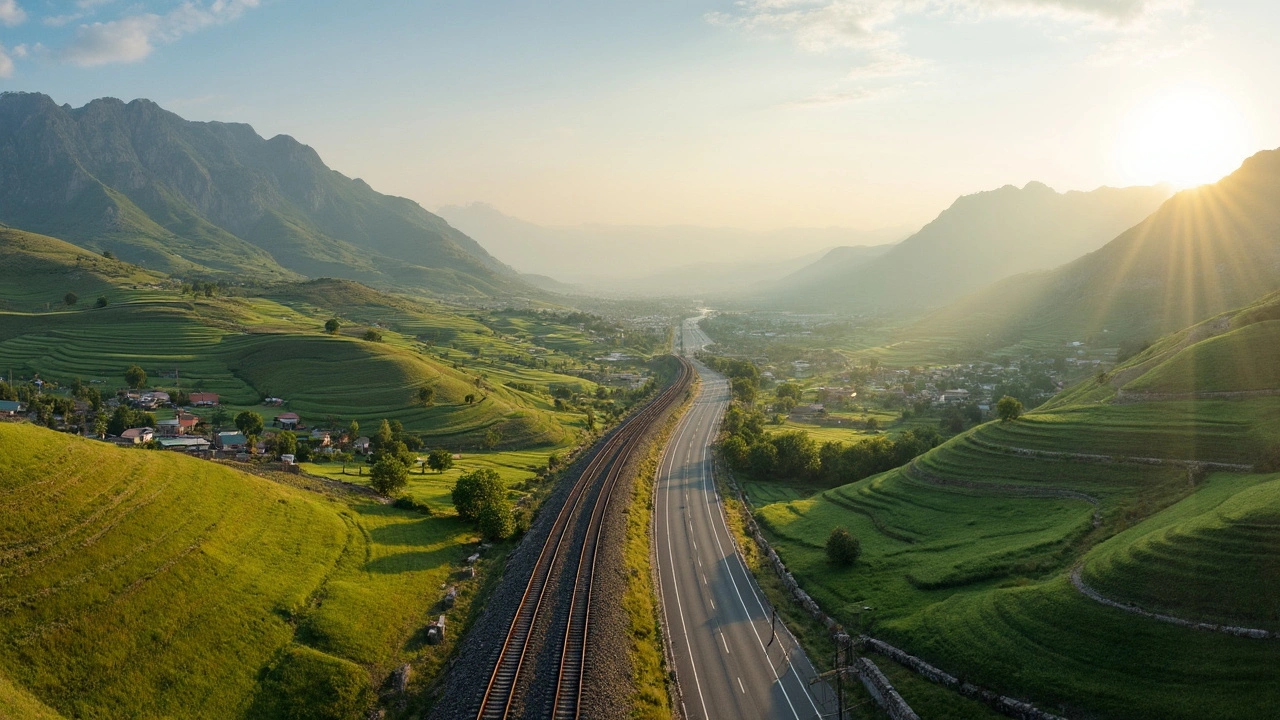Most people skipping through Azerbaijan go straight for the big cities or the beaches, but there’s so much more hiding just a bit north and east. That’s where you’ll find Shabran District—a slice of real Azerbaijani life that’s equal parts farmland, history, and handy transportation links. If you’re even a little curious about what daily life looks like outside Baku, or you’re just after some new scenery, Shabran’s the kind of place that wakes up your curiosity.
Tucked into the northeastern part of the country, Shabran sits in the Guba-Khachmaz Economic Region, bordered by four other districts. The main hub here is the city of Shabran (locals might still call it Davachi out of habit), which is home to just over 23,000 people—so it’s big enough to have what you need, but still small enough to feel personal.
Seventy rural communities surround the capital, giving you endless chances to get lost (in the best way) among fields, farms, and countryside roads. People come for the agriculture—think endless orchards, greens, and produce trucks on dusty roads—but also for the roots that stretch all the way back to medieval times. Fun fact: the old port town of Shabaran, which gave the area its name, was a big deal in trade and culture centuries ago, even though now it’s mostly a local curiosity located about 15 km north of the city itself.
- Where Is Shabran District and What Makes It Unique?
- A Quick Dive into Shabran’s Past
- Everyday Life and Economy in Shabran
- How to Get Around Shabran District
- Fun Facts and Tips for Visiting
Where Is Shabran District and What Makes It Unique?
Shabran District hits that sweet spot in northeastern Azerbaijan, not too far from both the Caspian Sea and the greater Caucasus. You’ll find it squeezed between the districts of Khachmaz, Quba, Khizi, and Siyazan. All that means is, wherever you are in this corner of the country, you’re never more than an hour or so away from hitting Shabran’s borders.
The big pull here is how this area mixes old-world roots with the quieter side of Azerbaijani life. The capital, also called Shabran, acts like the local nerve center, but most of the district’s 59,900 people (as of 2020) live scattered across almost 70 villages and settlements. The region spreads over 1,090 km², so if you’re looking for space and a break from packed city streets, it delivers. You’ll see orchards, fields, and countryside spread out as far as the eye can see.
What’s cool is that Shabran’s location is a crossroads—historically and today. You’ve got the main north-south railway and decent road access, so getting in and out is a breeze. That’s great if you want to use Shabran as a base for exploring surrounding regions, doing business, or just passing through on a road trip.
- If you love history, the area’s link to the medieval port town of Shabaran still shows up in place names and folk stories.
- Travelers favor Shabran’s quieter vibe, uncrowded guesthouses, and easy access to both the mountains and the seaside.
- It’s easy to reach from Baku or Guba, so you don’t need to worry about getting stuck on the way in or out.
So, what makes Shabran District unique? It’s where tradition meets accessibility. Here, you’ll find the Shabran District acting as a real bridge between past and present, city and countryside, mountains and plains. It doesn’t try to impress with flashy buildings or huge crowds—instead, it gives you space, realness, and stories you might not find anywhere else.
A Quick Dive into Shabran’s Past
You don’t have to look far in Shabran District to find bits of history peeking out. The district first popped up on maps as Davachi back in 1930 during the Soviet years. It was briefly erased in 1963 (for reasons only bureaucrats understand), but two years later, officials brought it right back. Locals got used to calling it home again, and then in 2010, the name officially switched from Davachi to Shabran. That change was more than paperwork—it was a nod to some real deep roots.
The real story goes much further back, though. The original Shabaran was a bustling medieval port town. Way before oil pipelines or phone towers changed Azerbaijan, Shabaran ferried goods and people along the Caspian coast. Some say travelers, spice traders, and even armies used it as a stopover. If you ever visit, just know the original spot sits about 15 km north of today's city. Not much remains, but you’ll hear tales from locals about old coins, pottery, and traces of city walls popping up after heavy rain.
The whole district’s boundaries seem to shift along with the tides of history. Here’s a quick look at the big years:
| Year | Event |
|---|---|
| 1930 | Davachi District set up in Soviet Azerbaijan |
| 1963 | District was abolished, area merged elsewhere |
| 1965 | District restored by Soviet government |
| 2010 | Official renaming to Shabran District |
Historian Vugar Aliyev, who’s written about regional Azerbaijani history, summed it up best:
“Shabran is not just a place on the map; it’s an echo of ancient trade, movement, and resistance through so many eras.”
So, even if today’s Shabran looks calm and modern, there’s a lot more bubbling under the surface—proof that this district’s always bounced back, one way or another.

Everyday Life and Economy in Shabran
Life in Shabran District feels grounded and straightforward. Most people here are closely tied to the land. Farming is the heartbeat—families grow wheat, potatoes, corn, and tons of fruits and vegetables. Walking through the region, you’ll see orchards of apples and plums, and in harvest season, almost every roadside stand offers fresh produce direct from local fields. Livestock farming is a big deal, too: cows, sheep, and goats dot the landscape, often looked after by entire extended families.
Shabran has a total of 69 rural settlements. This means there’s no one-size-fits-all way of living. Some villages are filled with small family houses and backyard gardens, while others center around collective farms or food processing plants. If you’re from a city, the pace here is slower. Shops are small but friendly, and bazaar days are social events where selling, bartering, and catching up with neighbors all happen at once.
The economy isn’t just about growing things, though. Shabran’s location helps boost trade and local business. The Shabran Railway Station connects farmers with bigger markets in Baku and beyond, and the roads linking Khachmaz, Quba, and Khizi help goods travel in and out quickly. Sometimes you’ll see big trucks hauling grain or produce on these routes—it’s a normal part of daily traffic.
- Poultry and dairy from the region often show up in nearby cities.
- Some residents work in transport, maintenance, and small-scale construction tied to agriculture.
- Tourism is growing slowly—people are starting to visit for eco-food, homestays, and agritourism experiences.
There’s a real sense of community in Shabran. Extended families often live close by, and neighbors genuinely help each other out. If there’s any sort of event, like a wedding or harvest festival, you’ll feel everyone pitching in. It’s the kind of social support you don’t see as much in bigger places.
If you’re interested in Shabran District, just know: you’ll find hard-working people, simple pleasures, and a local economy that’s holding its own thanks to good land, smart farming, and strong ties to local trade routes.
How to Get Around Shabran District
Getting around Shabran District is simple, but having a game plan helps since things work differently here than in the big city. Transport is straightforward and connects you to the essentials—the town, working villages, and a bit of the wild on the edges.
The Shabran District sits right on some of Azerbaijan’s main transport routes, so it's well connected. The district features a handy railway station in Shabran city. Trains run between Baku and Guba, and you can hop off right in Shabran if you’re coming from somewhere on that line. The journey from Baku to Shabran takes about 2.5 to 3 hours by train, with tickets usually available on the day and rarely selling out except during local holidays.
If you prefer the road, buses and minibuses (marshrutkas) leave the Shabran bus station for neighboring districts and rural towns. A typical marshrutka trip between the main city and a local village is about 30-50 minutes, depending on the state of the road. Intercity buses link Shabran to Baku and Quba, running several times a day. Taxis are everywhere, but it's wise to agree on a price since meters are pretty much unknown in rural Azerbaijan.
For those wanting independence, renting a car is a smart move. Roads in and around the capital are in decent shape, but be ready for bumps or unpaved stretches in the countryside. Fuel stations are reliable along the main highway (M1), but rare in small villages, so plan ahead.
For quick reference, here’s what to expect in terms of travel time within Shabran District:
| Route | Common Transport | Typical Duration |
|---|---|---|
| Shabran city to Baku | Train, Bus | 2.5–3 hours |
| Shabran city to Quba | Bus, Car | 1.5 hours |
| Shabran city to Village (avg.) | Marshrutka, Car | 30–50 minutes |
| Shabran city to medieval Shabaran | Car, Taxi | 20–30 minutes |
Here are a few quick tips for getting around:
- Carry small bills—drivers and shopkeepers in rural areas rarely have change for large notes.
- If in doubt, ask the locals—people here are friendly and used to helping travelers.
- Mobile data is patchy outside town, so grab an offline map if you plan to explore remote spots.
The district might not have the flashiest public transport, but what’s there gets you where you need to go. Just check timetables, pack some patience, and you’ll be all set to see what makes Shabran tick.

Fun Facts and Tips for Visiting
If you’re thinking about stopping in Shabran District, you’ll want a few insider details before you pack your bags. This region isn’t packed with tourists, so you can expect a more genuine vibe—and that starts the moment you step off the train at Shabran Railway Station, still a vital link for locals and travelers alike.
Here are some facts and easy tips to make your visit smooth and memorable:
- Shabran’s got 69 villages, and many locals have deep roots—swap stories at a tea house and you might hear about the old port town, Shabaran, famous in medieval times for trade and shipbuilding.
- You can visit the spot of old Shabaran about 15 km north of the city center; even though the town is gone, the area’s calm and gives you a sense of just how long people have been living here.
- Agriculture is more than a buzzword—you’ll see rows of orchards, vineyards, and small farms. Don’t be shy about trying fresh produce from roadside stalls, especially in spring and early summer when fruit is everywhere.
- Shabran is family-friendly and super safe. Walking or cycling in the countryside is easy, as roads between villages are mostly quiet.
- If you want to travel by rail, the Shabran Railway Station connects the district to Baku and other cities, making it a convenient base if you’re exploring the northeast.
Quick tips: Learn a few handy Azerbaijani phrases; people here really light up when you greet them in their language. The summer can get hot, so bring water if you’re hiking. And while there aren’t big hotels everywhere, guesthouses and local homes often host visitors—just ask around in Shabran city’s center for options.
